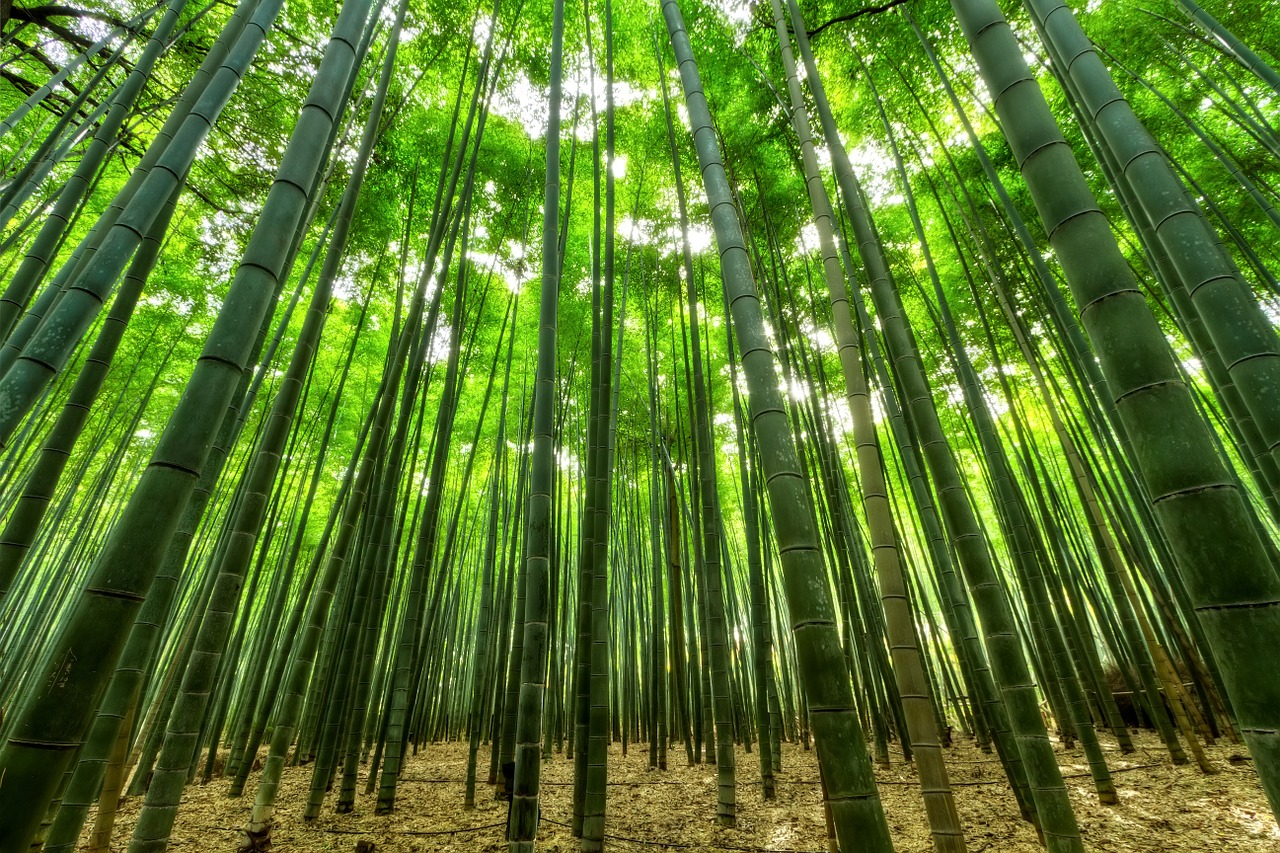
Nowadays, “bamboo forests” are becoming a serious problem in Japan, especially in western Japan including Kyushu Island. A few decades ago, bamboo (Moso-bamboo) was planted for its bamboo shoots. However, because cheap bamboo shoots are now largely imported from abroad, most of the planted bamboo forests are left unattended. This uncontrolled spreading of bamboo forests is increasingly a serious problem.
So far, researchers have been trying to use bamboo as an industrial material in order to solve the bamboo problem. For example, paper prepared from bamboo pulp has already been produced, and the timbers assembled from bamboo were used as a structural material. In the viewpoint of technology, bamboo is similar to wood as an industrial material. However, most attempts for the application of bamboo did not turn into actual utilization. The main reason for not using bamboo as a raw material is not the performance of the products prepared, but the high price of the products derived from bamboo. Bamboo is abundant, but in general bamboo forests are dotted on mountain slopes. Therefore, it is not easy to gather bamboo. Because the cost of gathering bamboo is high, the prices derived from bamboo are also high. The economic feasibility should be very important for the application of bamboo.
We consider that the production of several high-value products from bamboo should be effective for the solution of the bamboo problem. That is the cascade use of bamboo as a raw material for high-value products.
In general, plants mainly consist of cellulose, hemicellulose, and lignin. Xylan exists as hemicellulose in bamboo. Xylo-oligosaccharide is known to be a food for specified health use (FOSHU) in Japan. It was reported that xylo-oligosaccharide can be produced from bamboo by a hot compressed water treatment [1]. The price of FOSHU can be expensive. However, the percentage of xylan should be 25 wt. % at most in bamboo. Therefore, the amount of the bamboo residue after the hot compressed water treatment should be enough to be the starting material for other high-value products.
The electrical double layer capacitor (EDLC) is known as an electrical power storage device [2]. In the EDLC device, the electrical double layer of the interface between the electrode surface and the electrolyte is used for the storage of electrical energy. This principle of electrical energy storage by the EDLC is rather different from that of a secondary battery. The amount of the stored electrical energy of the EDLC is much lower than that of a secondary battery. However, the EDLC has several advantages over the secondary battery, such as the Li-ion battery. For example, the high performance of its rapid charge-discharge property. Therefore, the EDLC should be one of the candidates for the electrical power storage device of electric vehicle (EV). Research related to EDLC is ongoing all over the world.
Porous carbon materials, such as activated carbon are used as the material for the EDLC electrode because these materials are electrical conductors with high surface areas. In general, the price of the material used for the EDLC electrode is higher than that for activated carbon as the adsorbent. If the bamboo solid residue of hot compressed water used in the production of xylo-oligosaccharide can be applied as the starting material for the EDLC electrode, several high-value products, such as xylo-oligosaccharide and the EDLC electrode, can be produced from bamboo.
In our research work [3], it was confirmed that xylo-oligosaccharides, such as xylobiose and xylotriose, were successfully produced from bamboo in a water solution by a hot compressed water process. Moreover, the treatment drastically decreased the amount of ash in the solid residue. The small amount of ash should be an advantage as the raw material for activated carbon. The activated carbon, which has a higher than 2000 m2 g-1 BET specific surface area, was synthesized from the solid residue by KOH activation.
The bamboo solid residue should be a promising candidate for the material of an EDLC electrode because the capacitance values of the carbon material derived from the bamboo solid residue was not inferior to those from the bamboo. Therefore, a high-performance EDLC electrode should be prepared from the bamboo solid residue when the carbonized process and activation process is optimized.
References
- H. Ando, H. Ohba, T. Sakaki, K. Takamine, Y. Kamino, S. Moriwaki, R. Bakalova, Y. Uemura, Y. Hatate, Hot-compressed-water decomposed products from bamboo manifest a selective cytotoxicity against acute lymphoblastic leukemia cells, Toxicol. in Vitro 18, 765-771 (2004)
- G.Z. Chen, Supercapacitor, and supercapattery as emerging electrochemical energy stores, Int. Mater. Rev. 62 173-202 (2017)
- T. Tsubota, K. Ishimoto, S. Kumagai, S. Kamimura, T. Ohno, Cascade use of bamboo as raw material for several high-value products: production of xylo-oligosaccharide and activated carbon for EDLC electrode from bamboo, Journal of Porous Materials, DOI: 10.1007/s10934-018-0567-6
These findings are described in the article entitled Cascade use of bamboo as raw material for several high-value products: production of xylo-oligosaccharide and activated carbon for EDLC electrode from bamboo, published in the Journal of Porous Materials. This work was led by Toshiki Tsubota from Kyushu Institute of Technology.








